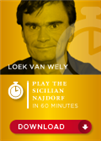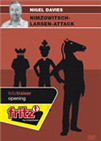An emblematic club
Much like the Marshall Chess Club in New York City, Buenos Aires has an emblematic chess spot in the "Club Argentino de Ajedrez". Established in 1905, the club famously organised the Capablanca-Alekhine 1927 World Championship match. Nowadays, it includes a museum which displays historic items from this match and memorabilia from other strong events that took place in Buenos Aires, like the Fischer-Petrosian Candidates Final from 1971.
The club was therefore chosen to host the presentation of the second instalment of a series dedicated to narrate the history of Argentina's participation in chess Olympiads. The series was created due to an initiative put forth by Senator Carlos Alberto Reutemann and approved by the National Senate.

From L to R: Oscar Panno (the second from the left), Enrique Arguiñariz, Sergio Negri, Enrique Valiente Noailles and Oscar Hansmann
Besides the authors — Sergio Negri and Enrique Arguiñariz — the President of the club Oscar Hansmann, philosopher Enrique Valiente Noailles and special guest Oscar Panno gave speeches during the presentation. Panno, estimated by chessmetrics.com to have been as high as the 18th strongest player in the world, was named Honorary President of the club, and declared:
This [second] tome I did not read yet, but in a way I wrote it, with some of my teammates. We did succeed during this so-called Silver Generation, but the success then started to fade away, maybe because chess — like other sports — responds to the socio-economic situation of the country.
Panno's brilliant career started to get momentum when he won the second World Junior Championship in Copenhagen, 1953, ahead of strong future grandmasters such as Fridrik Olafsson and Bent Larsen. Among other strong showings at international tournaments — especially in Mar del Plata and Palma de Mallorca — he was part of the Argentine teams that took silver at the 1954 Olympiad and bronze in 1958 and 1962 (he also got individual bronze in Munich 1958 and gold in Havana 1966).
Outstanding wins by Panno
 In 60 minutes you will get a crash course how to play such a complicated opening like the Sicilian Najdorf by the hands of GM van Wely who knows by experience how the dangers look like! The contents:
In 60 minutes you will get a crash course how to play such a complicated opening like the Sicilian Najdorf by the hands of GM van Wely who knows by experience how the dangers look like! The contents:
• Video 1, 2, 3: how to survive versus whites most aggressive approach: 6. Bc4, 6. Be3 and 6 Bg5
• Video 4: how to deal with the latest fashion in the Najdorf 6. h3 and last but not least
• Video 5: how to play vs the more classical set ups 6. Be2 and 6. g3
Panno facing Timman in Amsterdam, 1977 | Photo: Rob Bogaerts / Anefo
Post-war haven
 During the period covered in the book, much of the chess activity in Argentina was reinforced by the post-war European immigration, which had in Polish-born grandmaster Miguel Najdorf its most prominent figure. He arrived in Buenos Aires to represent Poland at the 1939 Olympiad — his team got silver medals while he took gold on second board, but he did not manage to take his prizes back home, as he took the wise decision of staying in Argentina given the conflict across the Atlantic.
During the period covered in the book, much of the chess activity in Argentina was reinforced by the post-war European immigration, which had in Polish-born grandmaster Miguel Najdorf its most prominent figure. He arrived in Buenos Aires to represent Poland at the 1939 Olympiad — his team got silver medals while he took gold on second board, but he did not manage to take his prizes back home, as he took the wise decision of staying in Argentina given the conflict across the Atlantic.
In the Forties, Najdorf was the second highest rated player in the world during 33 months according to Chessmetrics.
Already representing the South American country, his best Olympic individual achievements on the 1950-1976 period were his two consecutive individual gold medals on board one in Dubrovnik '50 and Helsinki '52 — both times Argentina finished in second place, behind Yugoslavia in 1950 and the Soviet Union in 1952.
Najdorf was also part of the 'Rest of the World' team that faced the Soviets in 1970. He was allocated on board nine, which paired him against none other than Mikhail Tal. The four-game match ended drawn after the players drew two games and traded blows with the white pieces.
Tal vs. Najdorf match, 1970
Other figures that made a difference in Argentine chess during this time span were Julio Bolbochán, Héctor Rossetto, Raúl Sanguineti and Miguel Ángel Quinteros. Bolbochán obtained individual gold and silver medals on board two in 1950 and 1954; Rossetto was also part of the team during that period and collected bronze and gold individual medals; Sanguineti took individual gold in 1956 and 1962; while Quinteros finished on 10½/13 to win silver on board three at the 1976 Haifa Olympiad.
 On this DVD Davies arms the viewer with insights into how to handle 1.b3 and demonstrates how he thinks White should meet Black’s main defences. Using examples taken from the practice of leading exponents of this opening he explains the strategies clearly and concisely.
On this DVD Davies arms the viewer with insights into how to handle 1.b3 and demonstrates how he thinks White should meet Black’s main defences. Using examples taken from the practice of leading exponents of this opening he explains the strategies clearly and concisely.The authors will conclude the four-book series with an instalment dedicated to the period 1978-2008 and a final one that will deal exclusively with women’s chess in Argentina.

The first instalment of the series: "The Pioneer Generation"
Translation from Spanish and additional reporting: Carlos Colodro
Links




















 During the period covered in the book, much of the chess activity in Argentina was reinforced by the post-war European immigration, which had in Polish-born grandmaster Miguel Najdorf its most prominent figure. He arrived in Buenos Aires to represent Poland at the 1939 Olympiad — his team got silver medals while he took gold on second board, but he did not manage to take his prizes back home, as he took the wise decision of staying in Argentina given the conflict across the Atlantic.
During the period covered in the book, much of the chess activity in Argentina was reinforced by the post-war European immigration, which had in Polish-born grandmaster Miguel Najdorf its most prominent figure. He arrived in Buenos Aires to represent Poland at the 1939 Olympiad — his team got silver medals while he took gold on second board, but he did not manage to take his prizes back home, as he took the wise decision of staying in Argentina given the conflict across the Atlantic.





